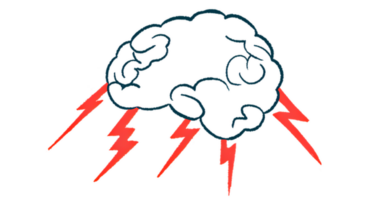Different Patient, Different Treatment: Precision Medicine Advances for Parkinson’s Disease

The discovery that abnormal cellular mechanisms are specific to distinct groups of sporadic Parkinson’s patients brings precision medicine for this neurodegenerative disorder one step closer to reality.
A recent study suggests that identifying these individual disease differences and assessing neuroprotective treatments specific to each one is a promising approach to personalized treatments.
The study, “Deep phenotyping of peripheral tissue facilitates mechanistic disease stratification in sporadic Parkinson’s disease,” was published in Progress in Neurobiology.
Parkinson’s is a progressive neurological disorder, defined by the loss of dopamine-producing (dopaminergic) neurons. A neurotransmitter, dopamine acts as a messenger to help coordinate information between distal parts of the body. Loss of dopamine results in many of the observed symptoms of Parkinson’s, from tremors and impaired balance, to mood swings.
Why and how dopaminergic neurons start to die, however, remains an active area of research.
Most Parkinson’s treatments are designed to replace lost dopamine. Examples include levodopa and a number of dopamine agonists.
The current study, however, raises the possibility of designing therapies that prevent the loss of dopaminergic neurons in the first place.
A team of researchers from the University of Sheffield in the United Kingdom took skin biopsy samples from 100 people with Parkinson’s disease and from 50 age-matched controls. They discovered that two groups of Parkinson’s patients had distinct differences in the functioning of either their mitochondria or their lysosomes.
The mitochondria function like batteries, providing cells with energy. The lysosomes function similar to a recycling plant, breaking down old, excess, and otherwise potentially toxic molecules. Mitochondrial and lysosomal dysfunction cause nerve death in Parkinson’s disease, which contributes to the observed symptoms.
The energy that mitochondria produce comes in the form of a molecule called ATP. The mitochondria from certain Parkinson’s patients in the study produced significantly less ATP than other patients and healthy controls.
Experiments showed that these patients’ mitochondria had fewer numbers of two key molecules in the ATP-generating process called complex I and complex IV.
Complex I deficiency and complex IV deficiency are both known to affect the nervous system and skeletal muscles, tissue types that are relevant to Parkinson’s disease.
Similarly, a subset of Parkinson’s patients had significantly more lysosomes than other patients and healthy controls. These lysosomes showed a marked decrease in the activity of an enzyme called Cathepsin D, which is vital to a healthy cellular equilibrium (also called homeostasis) and whose loss causes severe neurodegeneration.
Since cells are easier to experiment with in a petri dish than in a person’s body, the researchers transformed cells from the skin biopsies into dopaminergic neurons.
Importantly, the team found that the transformed neurons retained the same dysfunctional processes seen in the biopsied skin cells. This allows potential therapies, such as neuroprotective, or brain rescue, medicines to be tested directly on the patients’ own cells.
The team tested one such compound, called ursodeoxycholic acid (UDCA) in the cells with mitochondrial dysfunction. In past studies, UDCA has demonstrated a protective effect by preventing dopaminergic cells with mitochondrial dysfunction from dying.
In the most recent study, UDCA restored cellular ATP levels, apparently by increasing the activity of complexes I and IV to levels close to those of control subjects.
Sorting patients based upon differences in cellular function (“mechansitic disease stratification” in the words of the authors) may allow treatments to be better targeted to each patient’s unique disease manifestation.
The same group of researchers is currently conducting a Phase 2 trial (NCT03840005) to test the safety and tolerability of UDCA, as well as to further explore its neuroprotective potential. That trial is taking place in the United Kingdom and is actively recruiting. (More information is available here.)
Professor Oliver Bandmann, the study’s leading author, said in a press release that “[t]here currently isn’t a treatment available we can give people living with Parkinson’s Disease that can slow down or stop its progression.
“The results of this study will help scientists to understand how to develop new personalized drug therapies for neurodegenerative diseases and develop effective drugs to rescue the function of the cells affected and help the brain recover for the first time,” he said.






